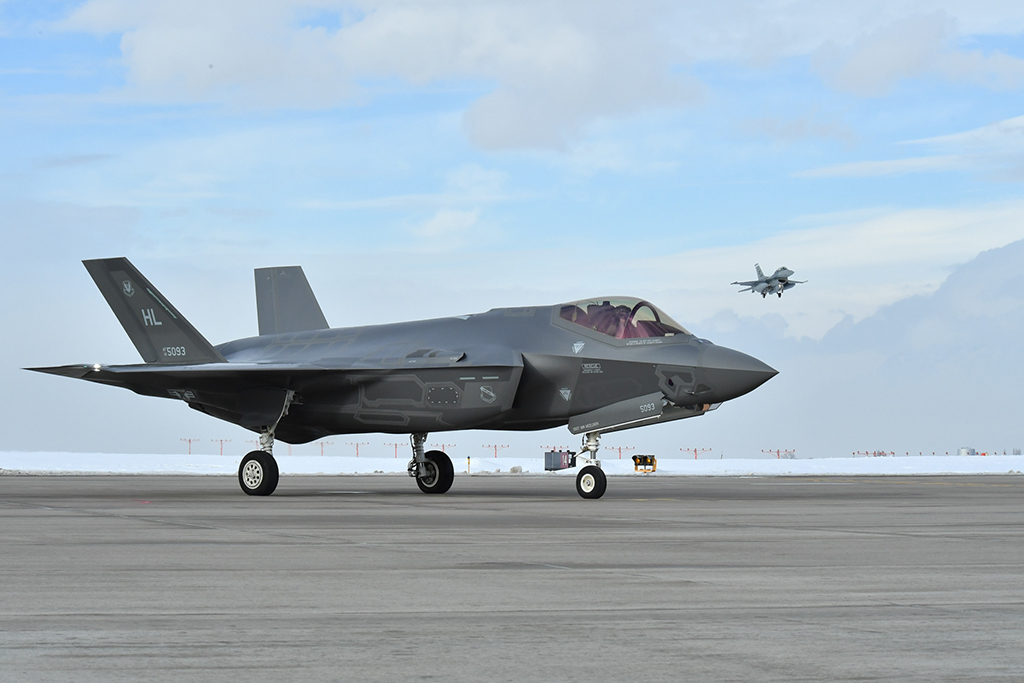By:February 10, 2017(Photo Credit: Andy Wolfe/U.S. Navy)
ROME — The head of Italy’s association of defense firms has launched a blistering attack on the U.S. and Lockheed Martin, accusing them of breaking promises made to Italy about workshare on the F-35 program.
Guido Crosetto, the head of Italian aerospace and defense industry association AIAD, said the U.S. “had not honored promises” made since Italy joined the program, hurting Italian firms as well as threatening the livelihood of Italy’s fledgling F-35 maintenance center.
In June 2002, Italy became a Level 2 JSF partner by committing to invest $1 billion in the program’s system development and demonstration stage.
Rome currently plans to buy 90 aircraft. In return, Italy was told its workshare would likely reach around 65 percent of its investment. “Today we are at less than 20 percent,” said Crosetto.
Crosetto, who was a government defense ministry undersecretary between 2008 and 2011, said if Italy falls behind on F-35 workshare, political consequences would follow.
“Back then, I staked my reputation in parliament by talking about the jobs and technology Italy would gain through choosing the F-35 program,” he said. “How easy will it be to defend these choices in parliament now?”
Over recent years, Italy’s spending on the F-35 program has come under fire in parliament from politicians who consider the money better spent on schools and healthcare, forcing the government to agree to funding cuts. With elections possibly due this year, tensions over the program could return.
Crosetto said Italian firms had been shut out from a global competition last year for maintenance contracts on the F-35
program.
In November, deals were awarded to repair 65 of a possible 774 repairable items on the aircraft for the period 2021-2015, with 48 going to the UK, 14 to the Netherlands and three to Australia, making up eight percent of the total items to repair.
“Small Italian firms were excluded because the competition favored large companies,” said Crosetto.
As it won the lion’s share of contracts, the UK ministry of defense said in November that its F-35 maintenance site in Wales would consequently become “a global repair hub providing maintenance, repair, overhaul and upgrade services for F-35 avionic and aircraft components.”
It added, “Over the lifetime of the programme, components for hundreds of European-based F-35 aircraft will be serviced and maintained in North Wales.”
Meanwhile, Israel also has won the right to build its own F-35 maintenance hub.
Work on the two hubs follows on the heels of Italy’s decision to open its own maintenance hub at Cameri in nothern Italy, on the site of the
final assembly line where it is turning out F-35s for its own air force.
Italy has to date rolled out six F-35s at Cameri, with the first four flying to Luke Air Force Base in Arizona to take part in pilot training and two deploying in December to its Amendola Air Base — the first Joint Strike Fighters built outside the US to become operational.
In 2014, Lt. Gen. Chris Bogdan, the F-35 program head, designated Cameri as a center for heavy airframe maintenance, meaning changes or repair to the body of the aircraft, including replacement of a bulkhead or the fixing of a wing.
“Italy was chosen from among many countries as a maintenance hub for all the F-35s flying in Europe, including the US aircraft flying here,” said Italian defense minister Roberta Pinotti at the time, adding that the decision was an “extraordinary result.”
Cameri has been tasked with airframe maintenance, while the UK is touting its North Wales hub as an avionics and components repair center, suggesting UK work will not overlap with work at Cameri.
But Crosetto disagreed, claiming the ramping-up of maintenance work in the UK could damage Cameri and represent a broken promise by the U.S.
“The original idea was to offer all types of maintenance at Cameri, that was the proposal made by the U.S. government and Lockheed Martin to me when I was in office,” he said. “To me the UK and Israel hubs are a violation of that,” he added.
Carlo Festucci, the general-secretary of AIAD, added, “Italy invested in Cameri with the idea it would do everything and was given the idea by Lockheed Martin that it would be the only hub in Europe.”


